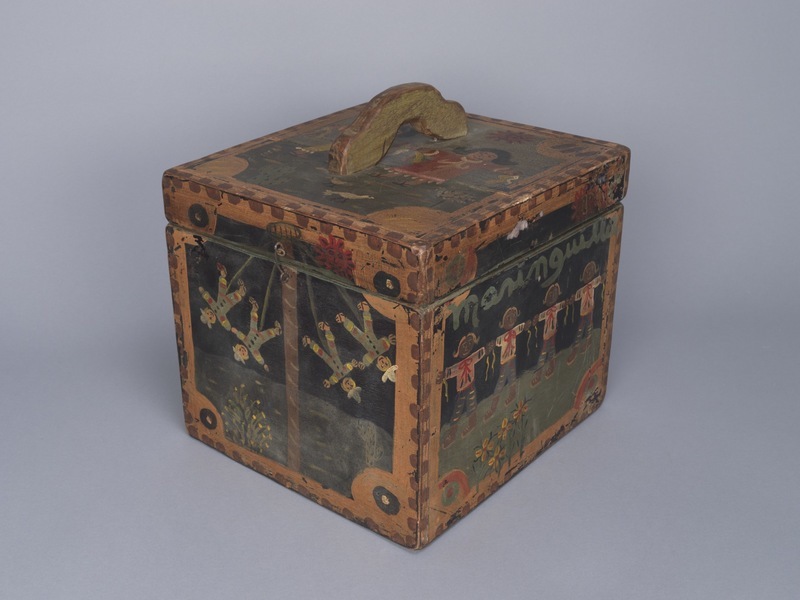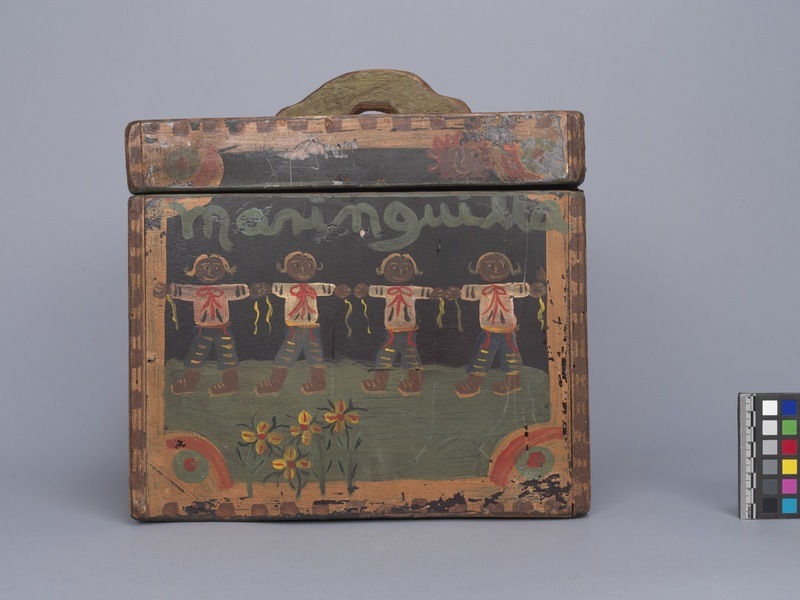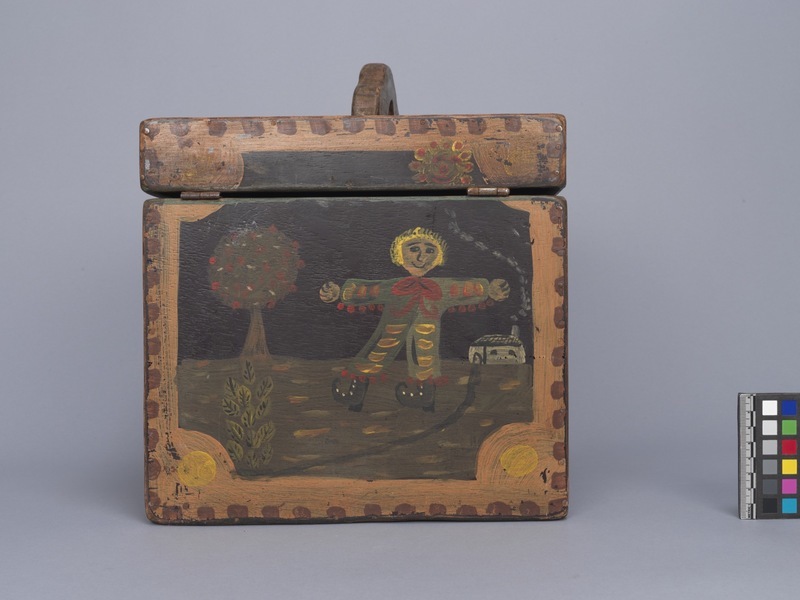Hand Puppet Box Item Number: 3341/7 from the MOA: University of British Columbia





Description
Wooden box (caja para títeres), painted, to hold hand puppets. Box is cube-shaped, with a shallow hinged lid with handle aligned front to back. There is a small hook and eye latch to secure the box. Each side has a scene painted within a frame of pinkish-brown with either yellow with red or black with beige dots in the corners. The front depicts voladores or flying pole dance with four men suspended from a pole. The left side has written, 'Tejon' and depicts a coati standing between some flowers and trees underneath the moon. The back depicts a blonde person by a house(?) with smoke from the chimney. The right side says 'maringuilla', and depicts four people dancing(?) in a row. The lid depicts two people standing side by side.
History Of Use
During traditional use in Sierra de Puebla dance dramas, the puppets, Mary and Joseph (that came in the box), did not speak, but would simply have clapped their wooden hands in appreciation of the dancers.
Narrative
These sets of puppets and boxes (3341/1-12) are similar to those illustrated and described in "Mexican Masks and Puppets: Master Carvers of the Sierra De Puebla" by Bryan J. Stevens (2012), and may have been carved by the same maker. Agapillo Sagreiro, the seller, is a campesino who worked the land (in the Teziutlan area) until he became too old. (In 2018 he was about 80 years old.) He now spends much of his life in Mexico City, with one of his daughters, and sells goods at La Lagunilla, a Mexico City flea market, most Sundays. He sells masks, costumes, helmets and related items from his home region on behalf of other campesinos, widows of dancers, or leaders of dance groups that have now become defunct. The carver of these puppets likely used to make puppets for use in traditional dance dramas, but the puppet sets now appear to be made as folk art, to be sold to museums and collectors. Since the 1960s, dance dramas in the Sierra de Puebla have become less and less common, and are no longer concentrated in rancherias, only in a few specific towns.
Item History
- Made in Teziutlan, Puebla, Mexico before 1999
- Collected by Anthony A. Shelton
- Owned by Agapillo Sagrero before December 23, 2018
- Received from Agapillo Sagrero (Seller) and Museum of Anthropology Exhibitions Budget (Funding source) on December 23, 2018
What
Who
- Culture
- Nahua and Totonac
- Field Collector
- Anthony A. Shelton
- Previous Owner
- Agapillo Sagrero
- Received from
- Agapillo Sagrero (Seller) and Museum of Anthropology Exhibitions Budget (Funding source)
Where
- Holding Institution
- MOA: University of British Columbia
- Made in
- Teziutlan, Puebla, Mexico
When
- Creation Date
- before 1999
- Ownership Date
- before December 23, 2018
- Acquisition Date
- on December 23, 2018
Other
- Condition
- good
- Accession Number
- 3341/0007